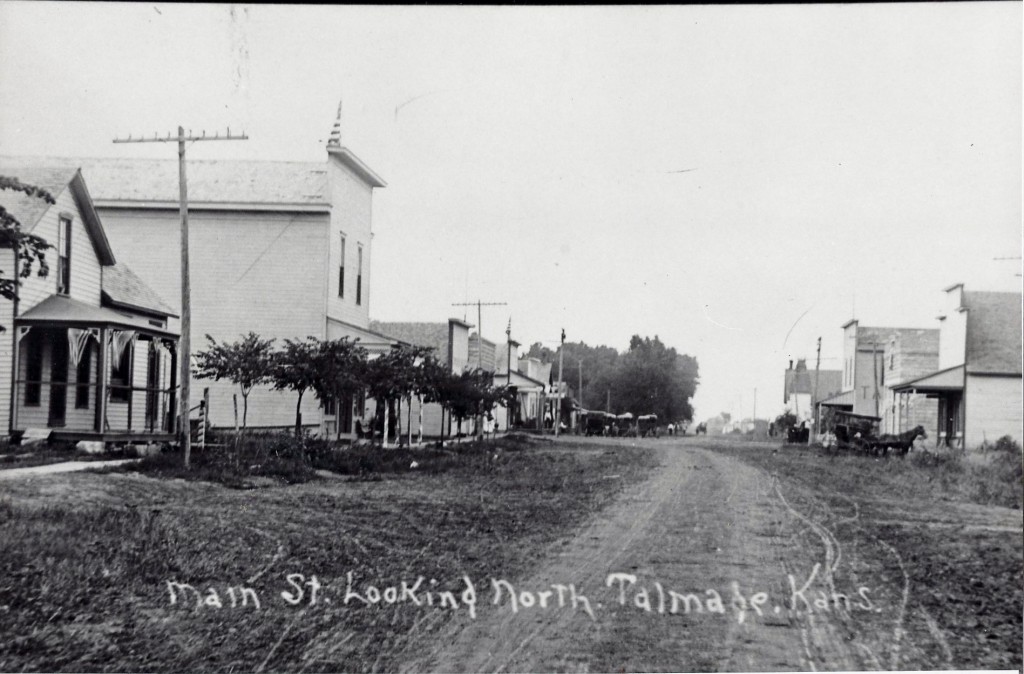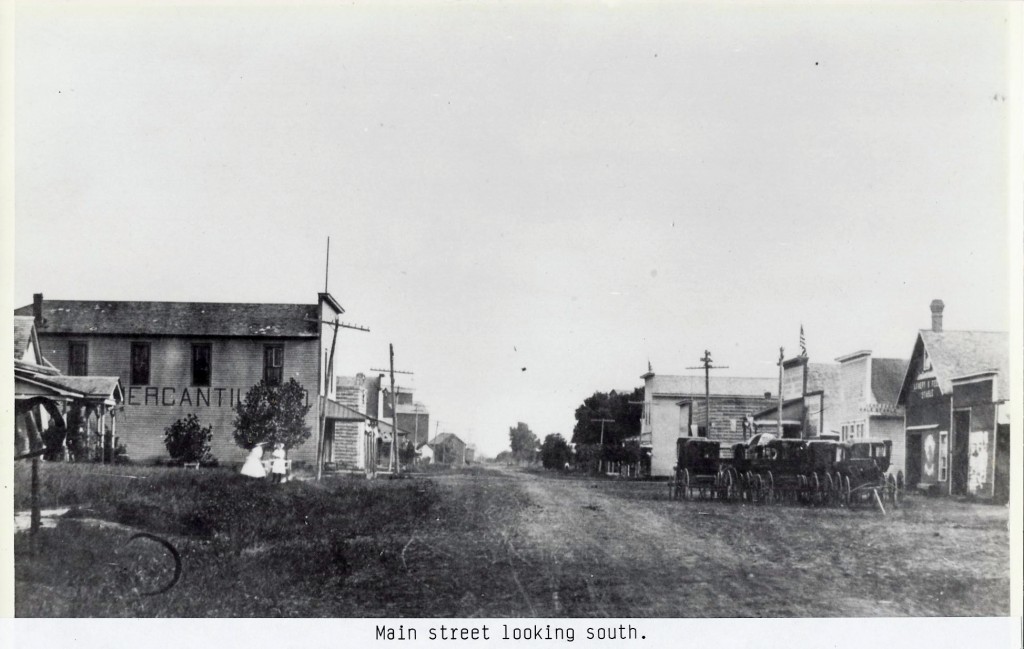In the beginning: Talmage from 1870 to 1900

Main Street looking North
(Compiled from Juanita Bathurst’s History of Talmage and Helen Dingler’s Past and Present: Towns of Dickinson County.)
Pioneers came to the sparsely settled northwestern Dickinson County area in 1870 and erected crude homes on their claims.
A homesteader, Robert Wilson, asked an Abilene preacher to conduct religious services in his new four-room home and invited his neighbors to the ecclesiastical meetings.
Thomas C. Iliff also came to the area in 1870. He donated land in the southeast corner of his farm in Willowdale Township (Sec. 1-12-1) for the school. Iliff School, District 29, was oftened referred to as Mud Creek School since Mud Creek was nearby.
In January 1873, Iliff was appointed postmaster at Willowdale. It is assumed the mail collection and dispersal point was located in his home or in the W.D. Fulton general store at the northeast corner of present Talmage Road and K-18.
An 1875 Dickinson County map located Willowdale in Buckeye Township, in the southwest corner of Section 6-12-2. (State Board of Agriculture, 4th Annual Report, Page 107.
An early newspaper reported the Mud Creek Methodist Church was founded in 1879 at the Iliff schoolhouse. A parsonage was built on a tract of this man’s land a mile north of the schoolhouse. The pioneers continued to worship in the schoolhouse until a white frame edifice was erected in 1883 on a slope beside the Prairie Dale Cemetery on the north side of the road in Flora Township (Sec. 36-11-1). Prairie Dale Methodist Episcopal Church was the first church in northwestern Dickinson County.
The school, church, and the Fulton’s general store formed the nucleus of the community of Willowdale until the Chicago, Kansas, & Western Railroad (ATSF, now BNSF) was built through here in 1887, when area residents platted the town of Talmage, registered in Dickinson County in January, 1888.

Main Street looking South
Talmage, named after a Presbyterian circuit riding preacher Rev. Dewitt Talmage, was the market and supply center for farmers. Families continued to migrate here, and railroad land was available for purchase and government land was obtainable through the Homestead Act of 1862.
Soon after the railroad track was completed, a depot was built. Elmer Carnine and Hoyt Wolfenburger were agents in Talmage during most of the 85 service years of the station, 40 years and 45 years respectively.
W.D. Fulton’s general store was moved to the west side of Main Street (Fair Road) in the fledgling village of Talmage. Several years later the store building was destroyed by fire. Fulton built the first grain elevator here. A horse powered treadmill manipulated the elevator’s internal machinery.
John Fulton, a brother of W.D., was appointed postmaster on December 22, 1887, and he served 12 years. Other longtime postmasters were Jacob Minick, 19 years; Laura Field, 8 years; Clare Knerr, 15 years; and Frank Coup, 20 years.
Belle Springs Creamery Co. built a station here in the early 1890s. Farmers brought their cans of milk to the station to be separated, and the cream was sold to the creamery while the farmers returned home with the skimmed milk. Tom Parrish was a longtime manager, and the Talmage Belle Springs station churned butter for sale to local customers.
A second creamery, the Fairmont Cream Station, managed by William Koelling was located on the east side of Main Street for several years.
When William Bowyer arrived in town in 1891, there were only six houses in Talmage. At that early day, Main Street was the east boundary of the town. Bowyer lived in the village until his death and was a blacksmith for many years.